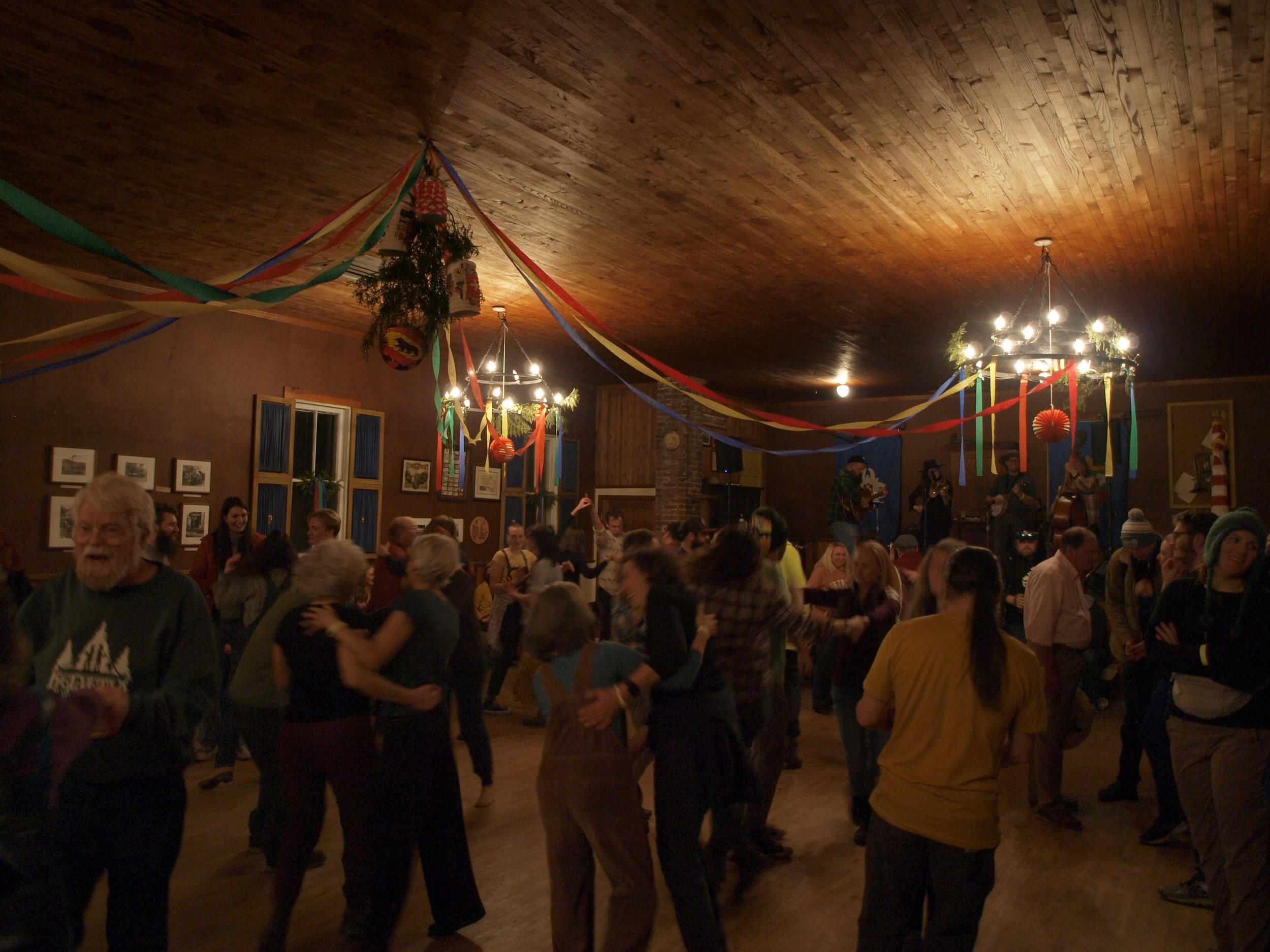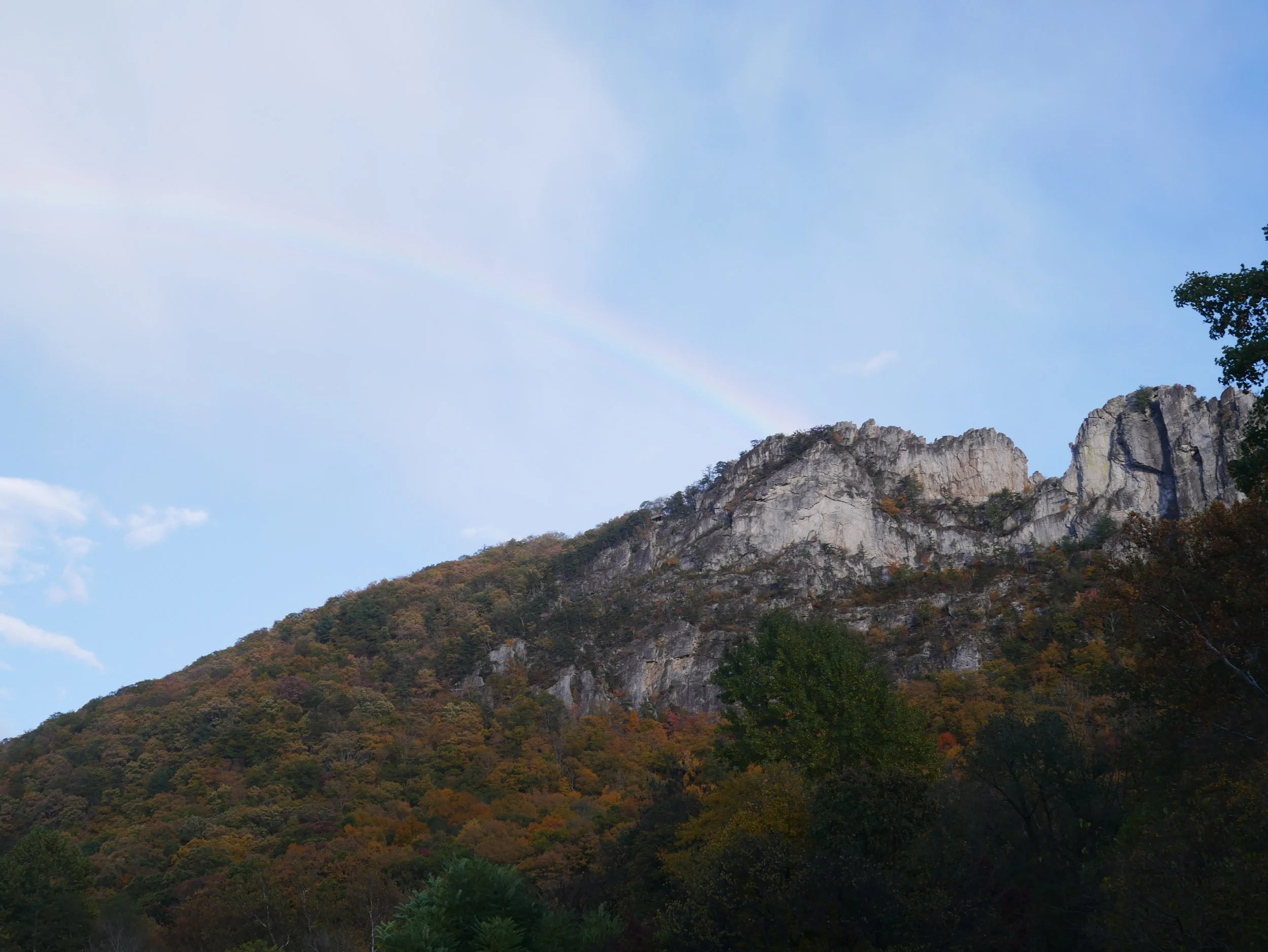North River Mills was once a vibrant community. The main road west from Winchester, the Great Wagon Road, passed through a gap known as Parker's Gap, probably the earliest name for North River Mills. During the French and Indian War there were deadly encounters and abductions around North River Mills. Dr. James Craik, Washington's personal physician, purchased many acres in North River Mills. Gustavus Croston, Revolutionary War veteran, lived in the village. The name, North River Mills, came into use in the 19th century. In the mid 19th century North River Mills was bypassed by the new east-west road, Route 50. North River Mills was destined to decline while communities along Route 50 would grow. During the Civil War, the presence of hostile Union and Confederate troops forced many residents to make hard choices. In addition to agriculture, over the years North River Mills had much industry. Now there are only two residents, but the town hosts an annual festival or homecoming the day before Mothers Day.
New Germany State Park: Raising Maryland’s Alps
When Western Maryland was a mysterious and distant territory to most Americans, for German immigrants, it felt just like home. Among the villages they settled in, one in present-day Garrett County came to be known nostalgically as New Germany. Today, this village is the location of New Germany State Park. Over a century after its settlement, New Germany hosted the first ski resort south of the Mason-Dixon Line and earned the region the moniker of “Maryland’s Alps.” In between the first German settlers and the ski resort, the land was transformed and made anew. To return to its alpine reputation, New Germany has witnessed the rise and fall of timbering, the growth of scientific forestry, and the snowballing success of outdoor recreation.
Education and Community at Paw Paw's Black School
After nearly 100 years since its construction, the former Paw Paw Black School continues to convey its historic association with the Town of Paw Paw's education and social history. For more than 25 years the building served to educate Black students, and as a place of social gathering for the small number of Black families in Paw Paw who lived in the vicinity of the school. The building remains largely unchanged since that time. The important role the school played in Black education and the Black community led to the building being listed on the National Register of Historic Places in 2024.
Elizabeth Dye Walker’s World of Transportation: Getting Around Before the Automobile
When Elizabeth Dye Walker lived in the Old Stone House of Mineral County in the beginning of the twentieth century, getting around employed a diversity of methods. It could mean a horseback ride, a horse-drawn buggy, or taking the Twin Mountain & Potomac Railroad. Where the railroad once ran, across the Northwestern Turnpike from the Stone House, now lies a trucking facility. Elizabeth Dye Walker’s childhood in the Stone House was colored by these various modes for motion, the resilient horse-drawn buggy and sled, a fruitless fruit-filled train, and a peculiar horseless carriage.
Traveller’s Rest: Travel in the Stagecoach Age
If you’re driving down Route 50 through Mineral County, blink and you might miss a curious stone structure on the side of the road. If you were a stagecoach passenger peering out from your horse-drawn carriage this L-shaped building would be a cause for celebration. In the age of horse-drawn wagons and carriages, travel was no small feat and the people who relied on Traveller’s Rest viewed the process of getting around fundamentally different from today. For them, the landscape of the Appalachian Forest could be wild and unpredictable and the journey itself was always far from mundane.
J.R. Clifford: A Pioneer of Equality and Democracy in Appalachia
John Robert (J.R.) Clifford was a trailblazing African American lawyer, educator, and activist whose work continues to inspire the fight for justice. Clifford's landmark legal battles, including the landmark ruling on November 16, 1898 in Williams v. Board of Education of Fairfax District, highlight his profound impact on civil rights and democracy.
Tracing Bison in the Appalachian Forest
The history of bison in the AFNHA unfolds like a windy trail that aligns with a stream of human change. Their presence and proliferation in the region was first blazed by indigenous tribes who brought a fire regime to the Appalachian forest, creating and maintaining the savannah and meadows that invited, hosted, and fed migrating buffalo. When European colonists came to West Virginia, they found much needed salt by way of the bison. Yet the settlers' domineering conception of the New World broke the balance between humanity and bison leading to their abrupt extermination in West Virginia. The cars and locomotives that now traverse these paths of least resistance owe a great debt to the herd-minded engineers they now succeed.
Grafton Lacy and the Hammons Family: The Multicultural Roots of Old-Time Music
West Virginia’s famed old-time folk family, the Hammons, live in both the mythologies and histories of Appalachia. Through the Hammons and their music, we gain a peek into the history of Appalachian old-time music and its diverse sources. Burl and Currence learned many of their tunes from Black folk artists like Grafton Lacy from Braxton County. Lacy is no exception; Black artists have made founding contributions in the genre. Their role often remains untold, or in the case of Lacy, is sparsely mentioned in the stories of Appalachian folk music. The origins of old-time music, ranging from West Africa to the British Isles, come alive in between the lines of the music itself, where its hidden history becomes clear.
Paw Paw and its Apple Orchard Industry
By 1910 there were more than 150 orchards in Morgan and Hampshire counties. A 1919 census of orchards by the WV Department of Agriculture recorded eight orchards in Paw Paw, with a crop of 105,000 bushels. In 1940, the Consolidated Orchard Company constructed a modern packing plant with a capacity of 130,000 bushels, which grew to a capacity of 200,000+ bushels by 1963. On April 16, 1948 Consolidated Orchard hosted the dedication of the B&O Railroad “Paw Paw” Pullman car. B&O chose to honor “Paw Paw” because of the town’s importance as an apple producing center, and the prominence of Henry Miller, Jr as a producer, shipper, and apple authority.
Seneca Rocks: The Forest's First National Recreation Area
Today all can explore Seneca Rocks because it is public land that sits within the Spruce Knob-Seneca Rocks National Recreation Area, the first congressionally designated national recreation area established by the USDA Forest Service. Modern-day visitors to the Seneca Rocks Unit of the Spruce Knob-Seneca Rocks National Recreation Area appreciate the unique amalgam of geological history, rich culture, and fruitful recreational opportunities. Although the rock face is wont to steal the spotlight, the diversity and wealth of culture associated with the area is equally - if not more - deserving of it.
Foundations of the Founding Fathers
The United States Constitution was drafted in 1787. While the Founding Fathers, former British subjects, rejected the British Parliament's model with its House of Lords and Commons, they were not entirely without inspiration. European governments offered little guidance for democracy at the time. However, existing models closer to home provided valuable insights. There are clear parallels between the Constitution and indigenous systems like the Great Law of Peace.
Creating Culture in Thomas
Many towns in West Virginia experienced lightning-fast growth as they became a part of a network of railroads. These towns usually had abundant resources like coal or timber that provided jobs for the towns’ residents. Many towns were built by companies– employees of coal companies would live in houses owned by the company they worked for. However, this was not always the case. One town that was built by residents instead of a coal company is Thomas, West Virginia.
Old Growth: Historic Trees of the Appalachian Forest
Let’s spend some time thinking about the organisms that have stood tall for well over 250 years. That’s right- we’re talking about trees. There are some trees in our region that have existed for over 250 years or are descendants of trees that play a role in history - from the Pringle Tree in Buckhannon to Cathedral State Park.
Remembering the Rosies: Ruth Linger Bell
Remembering the Rosies: Leona Margie Phares
The Rosie the Riveters of WWII are an inspiration to all generations for their courage and commitment and for blazing the trail that changed the way women were viewed in the workforce. The "Rosie the Riveter" movement is credited with helping push the number of women working up to 20,000,000 in four years. My mother, Leona Phares, was one of these great women who left their homes in the AFNHA region to work in factories in larger cities.
Katherine Johnson: NASA Mathematician
Down the road from the Green Bank Telescope is the hometown of a person who helped pave the way for space exploration. NASA Mathematician Katherine Johnson was born in White Sulphur Springs in 1918. At Langley Memorial Aeronautical Laboratory, Katherine was invited to work with the space task force and was the only non-white, non-male member of the team who worked to get a man to space.
Winter Traditions in the Appalachian Forest
The First Arthurdale Christmas
First Lady Eleanor Roosevelt was deeply involved in all aspects of the Arthurdale homestead. She watched over the process as the federal government began turning the Arthurdale farm into a community for the long-term unemployed. Mrs. Roosevelt visited Arthurdale in December of 1934 and announced the plans for the homesteaders' first Christmas to the newspapers. Their first Christmas allowed the homesteaders to work together for a joyous occasion.
Remembering West Virginia's Indigenous History
Many contemporary people believe West Virginia was nothing more than a hunting ground for the migratory Native Peoples. People without names, without connection. Yet, in my own survey, I am continuously reminded that West Virginia was home to many Indigenous communities, and these connections were held tight by long-term settlements. We see this by the traces they left behind, such as pottery, copper, shell, luxury items, burial sites, and old-growth trees. Many of the sites that archaeologists research are my direct ancestors, and the ancestors of existing descendant communities throughout the Eastern United States.




















